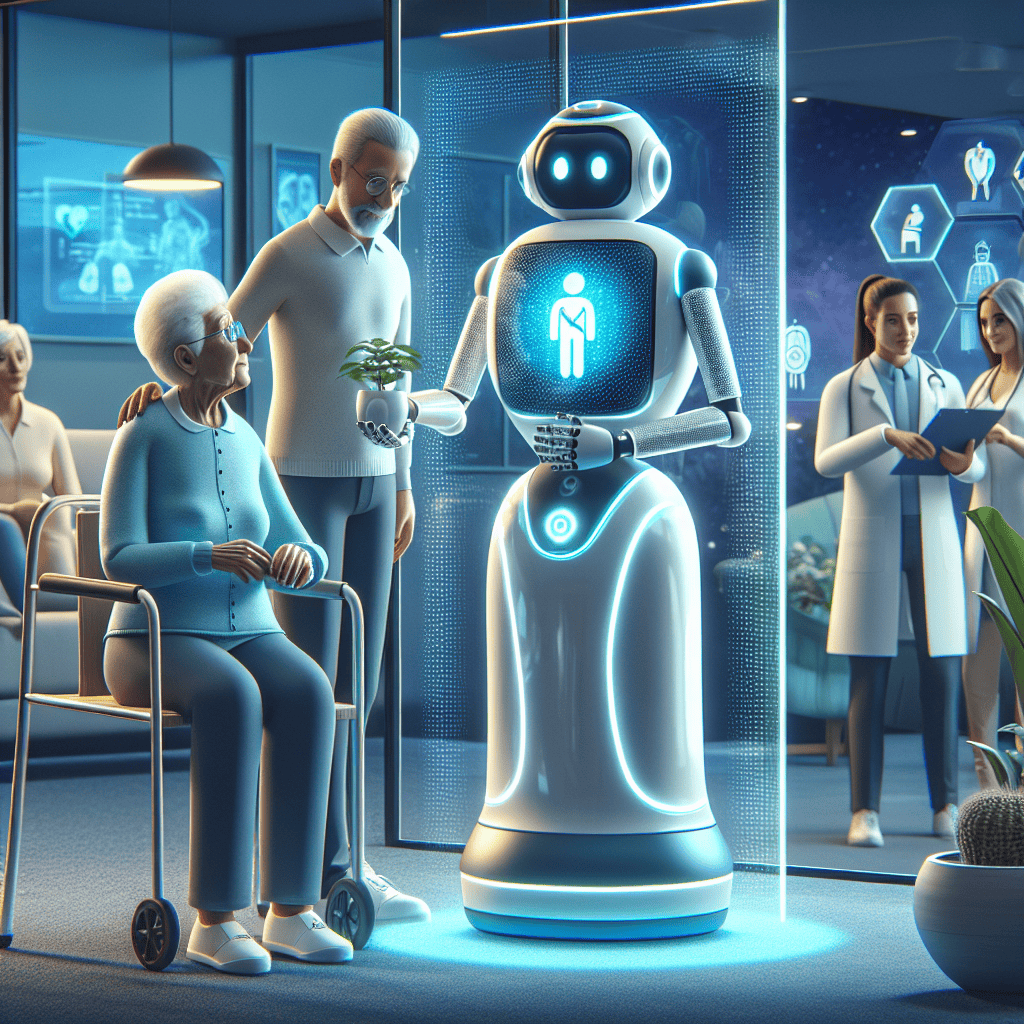Revolutionizing Elder Care: The Emergence of Robotic Caregivers

The global population is aging at an unprecedented rate, leading to a surge in demand for elder care services. As traditional caregiving resources become increasingly strained, innovative solutions are emerging to address these challenges. Among these, robotic caregivers are gaining attention as a revolutionary approach to elder care. This article explores the emergence of robotic caregivers, examining their potential to transform the landscape of elder care through technological advancements, ethical considerations, and real-world applications.
The Growing Need for Innovative Elder Care Solutions
The demographic shift towards an aging population is a global phenomenon. According to the World Health Organization, the number of people aged 60 years and older is expected to double by 2050, reaching approximately 2.1 billion. This demographic trend presents significant challenges for healthcare systems, families, and societies at large.
Traditional caregiving models, which rely heavily on human caregivers, are becoming unsustainable due to several factors:
- Shortage of Caregivers: The demand for caregivers is outpacing supply, leading to a caregiver shortage that is projected to worsen in the coming decades.
- Rising Costs: The cost of elder care is increasing, placing a financial burden on families and healthcare systems.
- Burnout Among Caregivers: Caregivers often experience high levels of stress and burnout, impacting the quality of care provided.
These challenges underscore the need for innovative solutions that can enhance the quality of care while alleviating the burden on human caregivers. Robotic caregivers are emerging as a promising solution to address these issues.
Technological Advancements in Robotic Caregivers
The development of robotic caregivers is driven by advancements in several key technologies, including artificial intelligence (AI), machine learning, and robotics. These technologies enable robots to perform a wide range of tasks, from assisting with daily activities to providing companionship and monitoring health.
Some of the most notable technological advancements in robotic caregivers include:
- AI and Machine Learning: AI algorithms enable robots to learn from interactions with humans, improving their ability to understand and respond to individual needs.
- Natural Language Processing (NLP): NLP allows robots to communicate effectively with elderly individuals, enhancing their ability to provide companionship and support.
- Sensor Technology: Advanced sensors enable robots to monitor vital signs, detect falls, and provide real-time health data to caregivers and healthcare professionals.
- Mobility and Dexterity: Improvements in robotic mobility and dexterity allow robots to assist with tasks such as lifting, transferring, and feeding.
These technological advancements are paving the way for the development of sophisticated robotic caregivers that can provide comprehensive support to elderly individuals.
Ethical Considerations in the Use of Robotic Caregivers
While robotic caregivers offer numerous benefits, their use also raises important ethical considerations. These considerations must be addressed to ensure that the deployment of robotic caregivers aligns with societal values and respects the rights and dignity of elderly individuals.
Key ethical considerations include:
- Privacy and Data Security: Robotic caregivers often collect and store sensitive health data, raising concerns about privacy and data security. Ensuring robust data protection measures is essential to safeguard personal information.
- Autonomy and Consent: The use of robotic caregivers should respect the autonomy of elderly individuals, ensuring that they have the ability to make informed decisions about their care.
- Human Interaction: While robots can provide companionship, they should not replace human interaction entirely. Maintaining a balance between robotic and human care is crucial for the well-being of elderly individuals.
- Equity and Access: Ensuring equitable access to robotic caregivers is important to prevent disparities in care based on socioeconomic status or geographic location.
Addressing these ethical considerations is essential to ensure that robotic caregivers are used in a manner that enhances the quality of life for elderly individuals while respecting their rights and dignity.
Real-World Applications and Case Studies
The deployment of robotic caregivers is already underway in various settings, providing valuable insights into their potential impact on elder care. Several case studies highlight the diverse applications of robotic caregivers and their benefits:
- Paro Therapeutic Robot: Paro is a robotic seal designed to provide therapeutic benefits to elderly individuals with dementia. Studies have shown that interaction with Paro can reduce stress, anxiety, and depression, improving overall well-being.
- Robear: Developed in Japan, Robear is a robotic bear designed to assist with lifting and transferring elderly individuals. Its gentle and precise movements make it a valuable tool for caregivers, reducing the risk of injury.
- Pepper Robot: Pepper is a humanoid robot used in elder care facilities to provide companionship and engage residents in social activities. Its ability to recognize emotions and respond appropriately enhances its effectiveness as a companion.
- Care-O-bot: Care-O-bot is a versatile robotic assistant designed to support elderly individuals with daily activities such as fetching items, reminding them to take medication, and providing entertainment.
These case studies demonstrate the diverse applications of robotic caregivers and their potential to enhance the quality of life for elderly individuals.
The Future of Robotic Caregivers in Elder Care
The future of robotic caregivers in elder care is promising, with ongoing research and development efforts focused on enhancing their capabilities and expanding their applications. Several trends are shaping the future of robotic caregivers:
- Integration with Smart Home Technology: The integration of robotic caregivers with smart home technology can create a seamless and supportive environment for elderly individuals, enhancing their independence and safety.
- Personalization and Customization: Advances in AI and machine learning will enable robotic caregivers to provide personalized care tailored to the unique needs and preferences of each individual.
- Collaboration with Human Caregivers: Robotic caregivers are likely to complement human caregivers, working together to provide comprehensive and holistic care.
- Expansion of Telehealth Services: Robotic caregivers can facilitate telehealth services, enabling remote monitoring and consultation with healthcare professionals.
As these trends continue to evolve, robotic caregivers are poised to play an increasingly important role in the future of elder care.
Conclusion
The emergence of robotic caregivers represents a significant advancement in the field of elder care, offering innovative solutions to address the challenges posed by an aging population.





